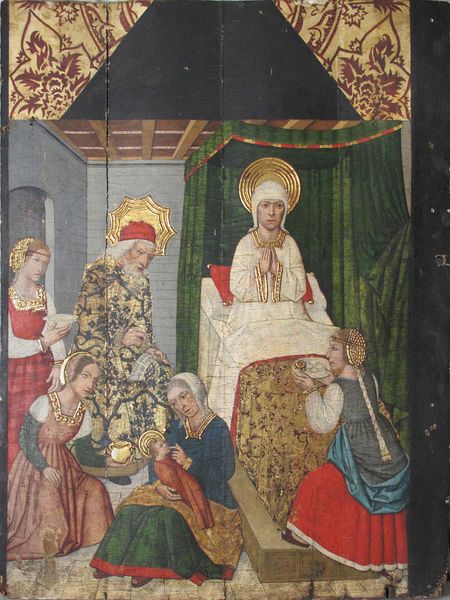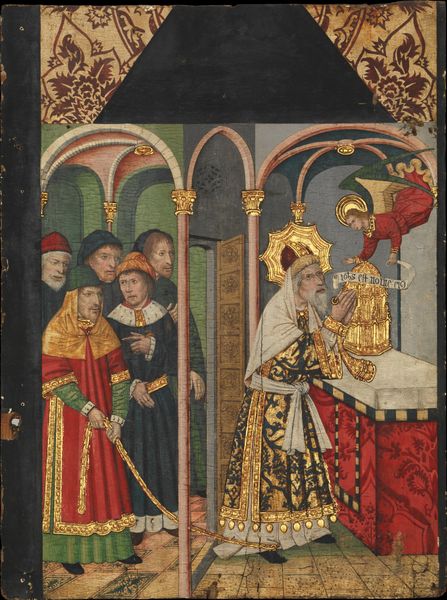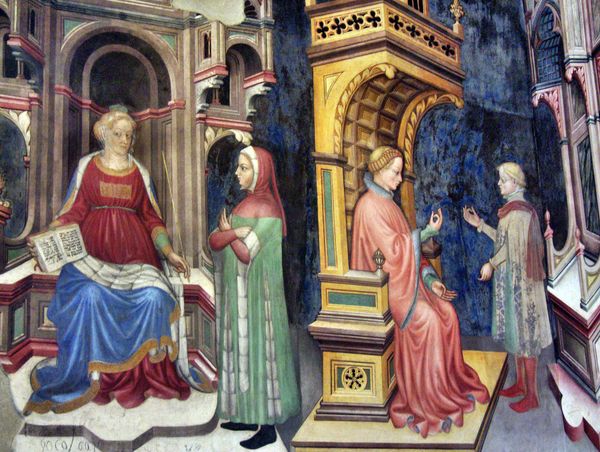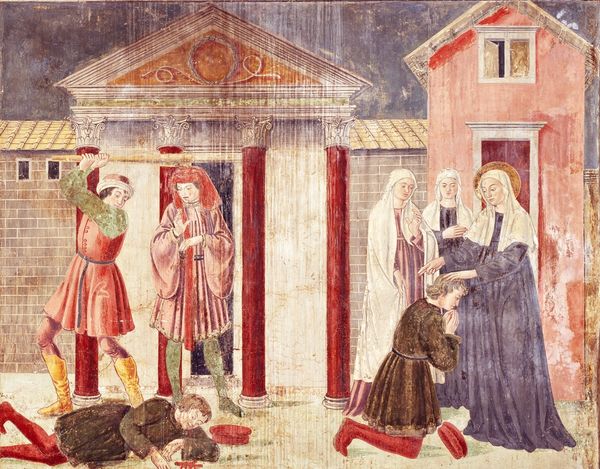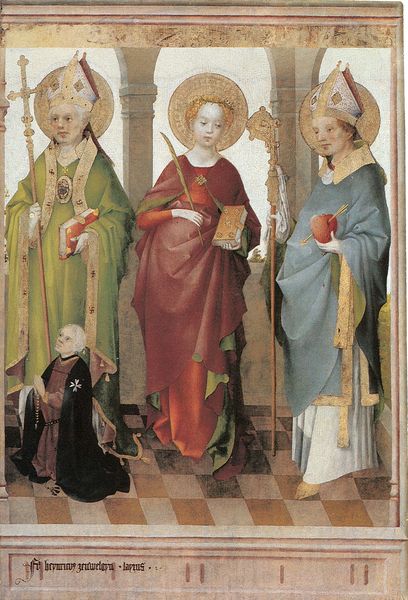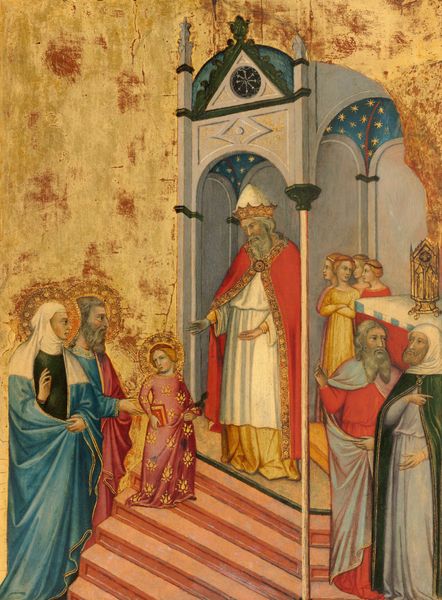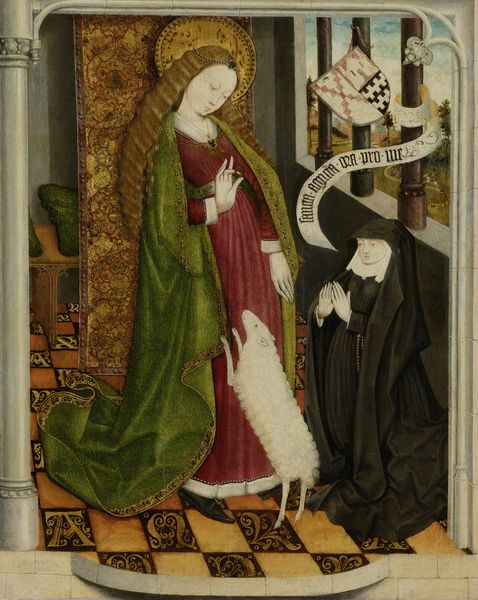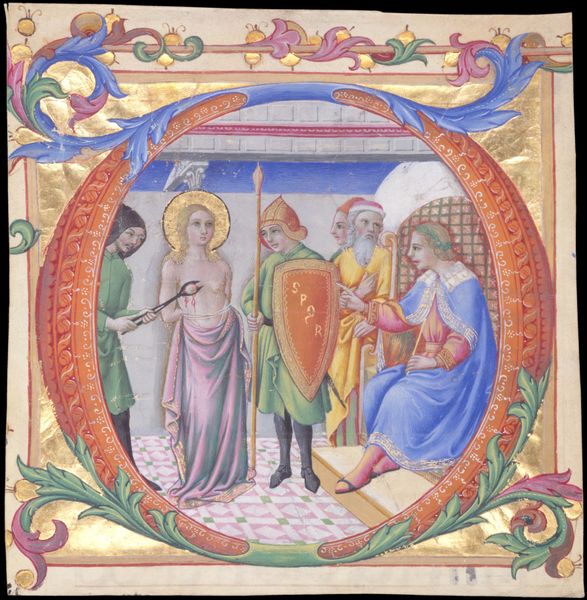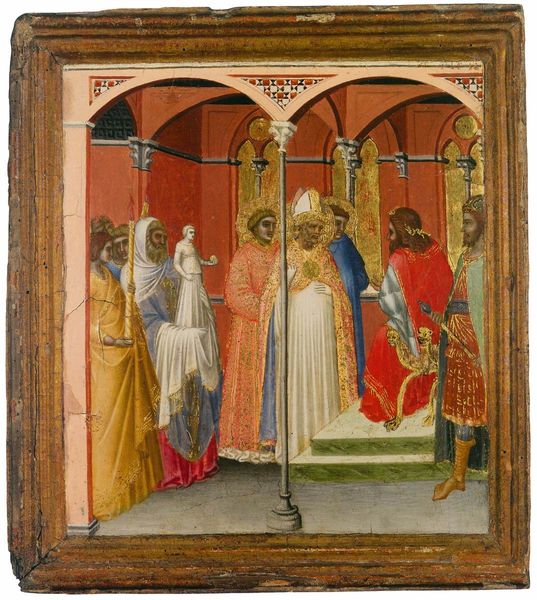
The Visitation Panel from Saint John Retable 15th century
0:00
0:00
painting, oil-paint
#
medieval
#
painting
#
oil-paint
#
figuration
#
oil painting
#
history-painting
#
virgin-mary
Dimensions: 39-1/4 x 38-3/4 in.
Copyright: Public Domain
Curator: We’re looking at "The Visitation Panel from Saint John Retable" by Domingo Ram, created in the 15th century. It's oil paint on panel, currently held at the Metropolitan Museum of Art. Editor: The first thing that hits me is the incredible stillness, a silent explosion of color despite the age of the panel, nearly otherworldly halos, and a somewhat frozen embrace. There's an intriguing tenderness despite the rigid style. Curator: Consider the materiality of that panel and the artist’s intent. This was made during a period of transition in artistic techniques, with oil paint allowing for richer colors and more detail than the tempera that preceded it. You also need to acknowledge that this piece was created for a religious institution and played a significant part in their narrative display and identity building. The work also speaks to workshop practices and use of apprentices to build and prepare painting. Editor: True, but to me, there’s also an intimate drama unfolding. I see the exchange between these figures as loaded. Mary and Elizabeth’s interaction hints at profound secrets, like a shared understanding of a miraculous event that is to change the world. What a revelation! What a responsibility! It's heavy. Curator: Right, but let's think of the materials that constitute that representation. Consider how the cost and availability of pigments shaped the overall palette and therefore, the social meanings that such material availabilities brought. Notice also how the very act of painting becomes an act of consumption reflecting socio-economic values. It underscores the role that wealth and power dynamics play, specifically for medieval commissioning and distribution. Editor: Alright, but step back and ask: who can’t relate to the universal joy of an anticipated birth and the special bond between women, mothers, relatives during those periods? What is painted are not social structures of capital and power, but intimate encounters that resonate still so profoundly within our bodies and hearts. Curator: True; although my eye immediately focuses on the socio-economic elements of the frame, composition, distribution. These visual motifs also contributed to defining the space for liturgical purposes and constructing notions of faith in that specific cultural context. We shouldn't lose sight of the power structures at play that conditioned these representations. Editor: Perhaps not, but I hope listeners consider that this work can simultaneously represent materials and human bonds. Curator: Indeed, hopefully appreciating how intricately those facets are intertwined provides deeper meaning.
Comments
No comments
Be the first to comment and join the conversation on the ultimate creative platform.
